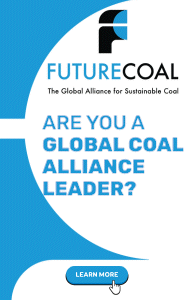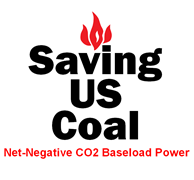
 










|
Signature Sponsor


By Frank Clemente and Fred Palmer, Coal is the Cornerstone, LLC May 11, 2025 - Predictive computer models are underestimating the amount of steel and metallurgical coal which will be required to urbanize the populations of Asia and Africa over the next 25 years. These models are dominated by Net-Zero solutions but the difficulties relating to alternative sources of energy, future technologies to be deployed, and the cost and time frames involved, cannot be assumed away. Computer projections are interesting conceptual ideals, but reality is a hard task master. Asia’s current urban population of 2.5 billion will increase to 3.5 billion by 2050. In Africa, where 700 million are now urbanized, the number will grow to 1.4 billion. In short, these two regions alone will add 1.7 billion people to cities by 2050 –equivalent to a new London every 48 days. This urban growth cannot proceed without massive increases in steel production as there are no scalable substitutes for steel. Modern cities cannot be built without steel, and steel cannot be produced at scale without metallurgical coal. Coal has been the foundation of urbanization since the Industrial Revolution. It was coal that enabled the division of labor in manufacturing, powered mass production, facilitated transportation and eventually provided the energy necessary for the widespread emergence of the most important technological development in the last thousand years--- electricity. It was coal-based energy that produced the building blocks of cities-- steel and cement. By the 1920s, coal supported the rise of advanced communication from the telephone to the radio to television to the Internet to the Smartphone. It is no exaggeration to say that coal has been the backbone of societal modernization, extending life expectancy and raising the quality of life for billions. And now, coal is bringing these benefits to Asia and Africa, two continents where billions of people remain mired in energy poverty, many moving to cities to improve their lives. Cities are the recognized pathway to eradicating global poverty and energy deprivation. Where will the energy to expand and build these cities come from? The most extensive urbanization in history took place in China after 1980, particularly the period between 2000 and 2010 when over 200 million people were added to cities. To accommodate this urban growth and meet the needs of the general population, China’s coal consumption increased from 1.3 billion metric tons to 3.6 billion. Steel production, over 75% of which was produced by coal-based energy, increased from about 125 million metric tons to over 625 million. In describing this growth, the International Energy Agency (IEA) has stated that this “economic miracle” in China was powered by coal. The World Economic Forum projects global steel consumption to rise 30% by 2050, from about 1,880 million metric tons to 2,450—an additional 560 million metric tons. This projection is echoed by numerous other forecasters (e.g. IEA and the Net Zero Project). Obviously, 570 Mtonnes is a very substantial number. Yet, during the next 25 years the world’s urban population is expected to rise by almost 2 billion people. This is 10 times more than the aforementioned urban growth in China, which alone required an additional 500 million metric tons of steel and a further 2.3 billion tons of coal in just a decade. In other words, the WEF assumes 2 billion people can be urbanized for about the same level of steel production growth as China needed to urbanize 200 million. The WEF numbers become even more questionable when one looks at existing per capita steel consumption in areas where explosive city growth will take place. In India, where 400 million people will join city ranks, the current per capita demand for steel is only 93 kg, compared to the European Union average of 284 kg. In Indonesia, where 61 million will be added to cities the average is only about 85kg. And in Nigeria, where the current urban population of 123 million will grow by a dramatic 117 million to 240 million, the average steel demand per person is only about 20kg. Forecasts like the WEF simply miss the consequences of urban growth for steel and coal demand in the developing world. Conclusion - Demography is reality. New “Net Zero” technologies are merely untested hypotheses until they are implemented in a timely fashion at affordable costs. Experience has shown there is no free lunch in the energy world. Putting idealized facilities into actual place generally takes much more time and significantly more money than originally projected-- if they are ever implemented at all. But demand marches on and the seeds of explosive city growth in Asia and Africa have already been sown. India has 360 million children under 15 years of age. Indonesia has 70 million and Nigeria has 95 million. Compare this to the entire European Union which has only 65 people under 15. The “Principle of Rising Expectations” is just not captured in forecasts like those from the WEF. The population dynamics of the developing world are poised to place unprecedented demands upon energy and mining companies for decades to come. With its vast reserves, and widespread distribution, coal is the leading resource to meet those needs. …………………………………………. Note: Coal is the Cornerstone, LLC seeks to give a voice to supporters of coal in its many dimensions and contributions. But we need help and ask like-minded individuals and companies supporting coal to make a financial contribution to the effort. Please contact Fred Palmer (vapalmers@aol.com) for details as to how you can support the fight for coal. ……………………………………………………………………………… Frank Clemente PhD Is Professor Emeritus at Penn State University. He specializes in research on the socioeconomic impact of energy policy and is the author of The Global Value of Coal, published by the International Energy Agency (2012). Professor Clemente has extensive experience in speaking, writing and presenting data on the value of coal to the United States and the world. All opinions expressed here are presented independently from the University. Fred Palmer served as CEO of Western Fuels before he joined Peabody Energy as Senior Vice President for Government Affairs. Palmer was Chair of the World Coal Association Board and a member of the National Coal Council. He received the American Institute of Mining, Metallurgical and Petroleum Engineers Award for “Distinguished Achievement in Coal Technology”. He also received a Statement of Appreciation from the National Coal Council in 2015 with a plaque for “Guidance since 1990”. |
 










|